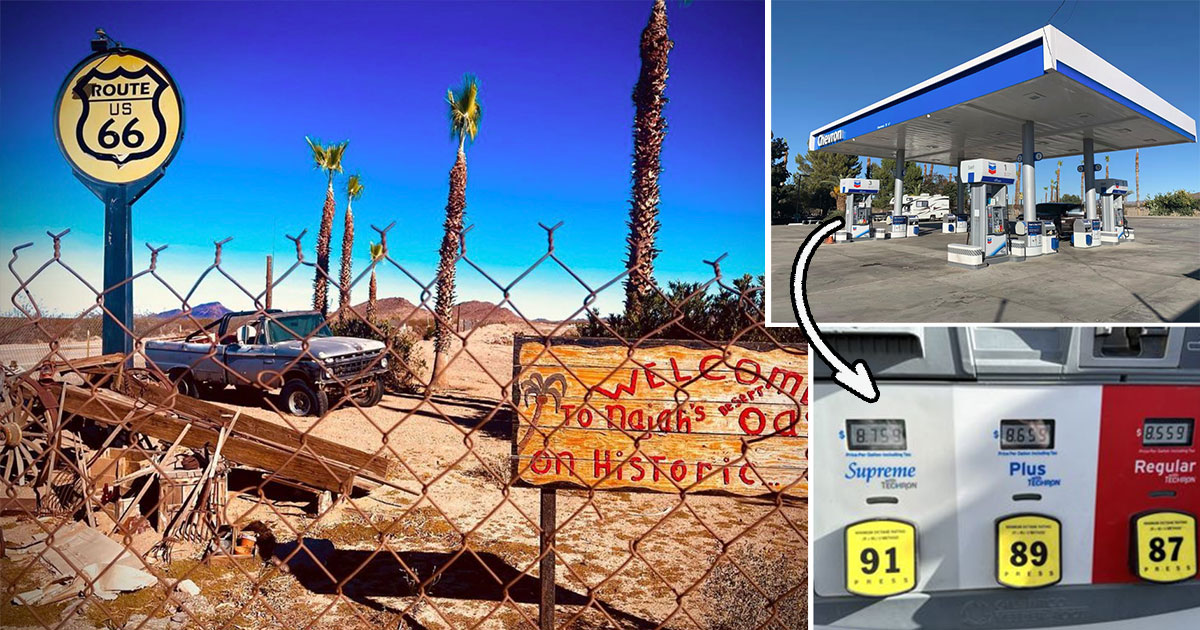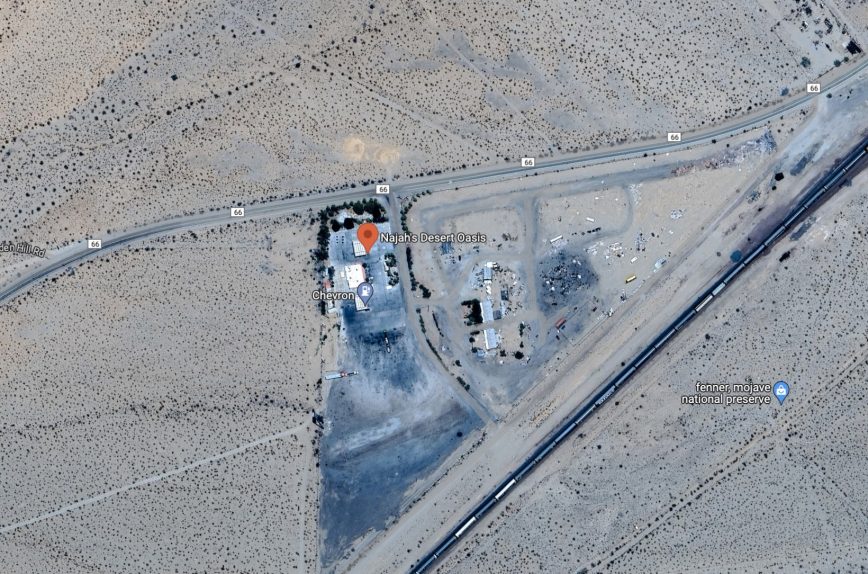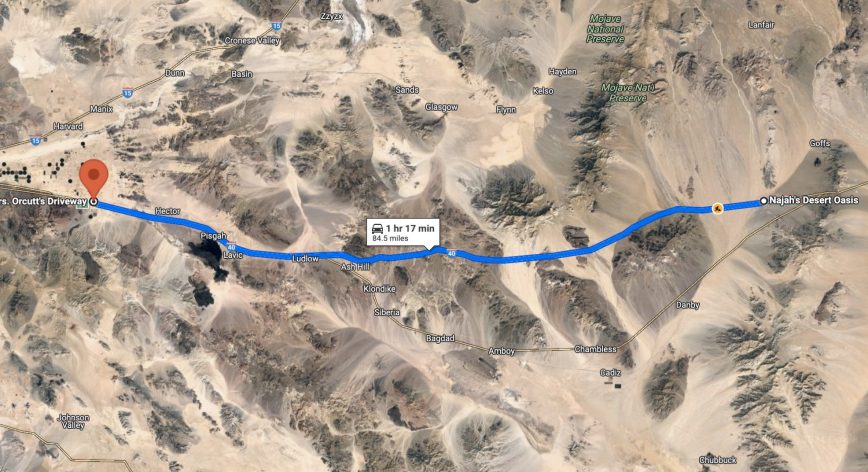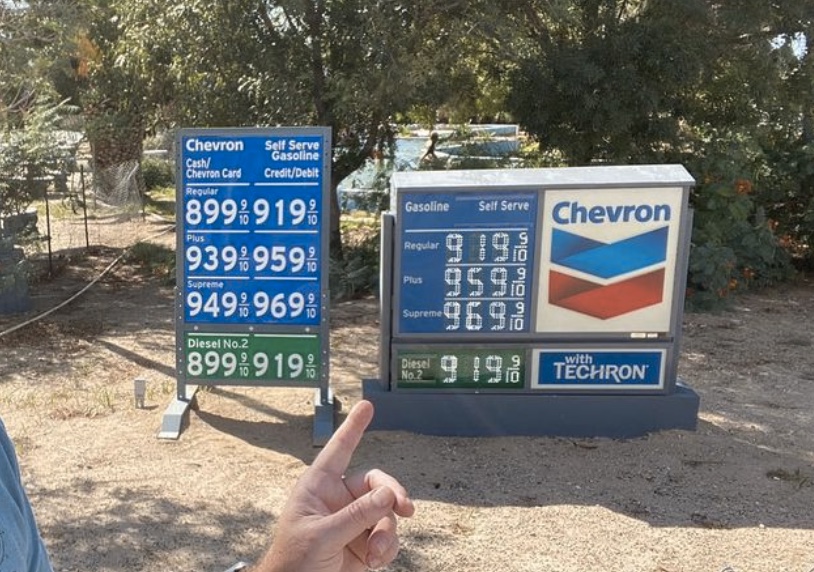$8.59+ Gas in the Desert: No Complaints, Says New Station

New Desert Gas Station Charges $8.59 Per Gallon, No Complaints Allowed
If you ever find yourself driving through the desolate stretches of the Mojave Desert, you might stumble upon a gas station with some of the highest prices in the country. Najah’s Desert Oasis, located at the intersection of Route 66 and Interstate 40 in Fenner, California, charges an eye-watering $8.59 per gallon of regular gasoline. But here’s the kicker: they don’t want to hear any complaints about it.

The Price of Isolation
Najah’s Desert Oasis isn’t just any gas station; it’s the only one for miles around. In the vast emptiness of the Mojave Desert, where civilization is but a distant memory, this station stands as a lone outpost of fuel and supplies. But with isolation comes a steep price, and Najah’s has made it clear that their prices reflect the costs of doing business in such a remote location.
The station charges $8.59 for regular gas, $8.65 for plus, and $8.75 for premium. These prices might make you do a double-take, but if you’re low on fuel in the middle of nowhere, you might not have much of a choice. The owners of Najah’s know this, and they’re not shy about it. A sign at the station offers a blunt explanation: “Our overhead is extremely high. Delivery cost is double with this location. There is a vast of almost 100 miles of desert, with no service. Please do not complain about the prices. You have a choice to be a customer or not. We are here for your convenience. Thank you for supporting a family owned business.”
A Controversial Stand
The station’s unapologetic stance on its pricing has sparked a mix of reactions. On one hand, there’s a certain logic to their position. Operating in such a remote location comes with unique challenges, including high delivery costs and limited competition. If you find yourself at Najah’s, chances are you’re in desperate need of fuel, and the station is there to meet that need—albeit at a premium price.
But on the other hand, the attitude conveyed by the sign can come across as a bit abrasive. It’s as if the station is saying, “You’re stuck here, and we know it.” This kind of attitude doesn’t sit well with everyone, and it’s reflected in the station’s online reviews. With a 1.4-star rating on Yelp and a 2.3-star rating on Google, it’s clear that many customers aren’t thrilled with the experience at Najah’s.
Customer Complaints and Poor Reviews
The reviews paint a picture of a station that’s not just expensive, but also lacking in basic amenities. One customer lamented the condition of the bathrooms, noting that two out of three stalls were out of order. Another complained about the lack of price tags inside the store, leaving customers to guess how much they’ll be charged at the register. For a station charging such high prices, you might expect a higher level of service—but according to the reviews, that’s not what you’ll find at Najah’s.
These poor reviews highlight a key issue: while Najah’s might have a captive audience, they’re not doing much to endear themselves to their customers. In an era where online reviews can make or break a business, this kind of reputation could be a liability. But then again, when you’re the only game in town, perhaps you don’t need to worry too much about what people think.
THE LEGEND OF MRS ORCUTT’s DRIVEWAY!

Orcutt’s driveway was where Car and Driver sneaked off to test cars at speeds as illegal as a bank robbery. Gale Banks built a Trans Am that did over 200 mph there at the pointy end of a dust cloud visible for miles.
The Reality of Desert Gas Prices
Najah’s isn’t alone in charging high prices in remote locations. Across the country, gas stations in isolated areas often charge more for fuel due to the higher costs of transportation and operation. In some ways, this is just a reality of life in the desert—if you want to drive through these remote areas, you have to be prepared to pay a premium for the convenience of fueling up along the way.

But while higher prices are to be expected, $8.59 per gallon is still enough to shock most drivers. For comparison, the national average gas price hovers around $3.50 to $4.00 per gallon. Even in California, where gas prices are typically higher than the national average, $8.59 is extreme. This begs the question: just how much is too much?
A Matter of Survival
For the owners of Najah’s, the high prices are a matter of survival. Operating in such a remote location means dealing with high overhead costs, including the expense of transporting fuel to the station. Unlike gas stations in more populated areas, Najah’s doesn’t benefit from high volumes of customers. Instead, they rely on the few travelers who pass through and need fuel to continue their journey.
In this context, the high prices start to make more sense. The station isn’t gouging customers just for the sake of it; they’re charging what they need to in order to stay in business. For travelers, this means paying a premium for the convenience of having a gas station in the middle of the desert. After all, the alternative could be running out of gas with no help for miles.
The Choice to Stop
At the end of the day, customers do have a choice. The sign at Najah’s makes it clear: you can choose to stop and pay their prices, or you can choose to keep driving and hope you make it to the next gas station. For some, the peace of mind that comes with filling up in a remote area is worth the cost. For others, the high prices might be enough to make them think twice about their travel plans.
But regardless of how you feel about the prices, there’s no denying that Najah’s plays an important role in the desert. For those who find themselves low on fuel in the middle of nowhere, this station can be a lifeline. And for the owners, the high prices are simply the cost of doing business in such an isolated location.
The Broader Implications
Najah’s Desert Oasis isn’t just a story about high gas prices; it’s a story about the challenges of operating a business in a remote location. It’s a reminder that convenience comes at a cost, and that cost can be steep in places where resources are scarce. For travelers, it’s a cautionary tale about the importance of planning ahead and being prepared for the realities of driving through the desert.
But it’s also a story about the changing landscape of the gas station industry. As more drivers switch to electric vehicles and gas stations become less essential, stations like Najah’s may face even greater challenges. For now, they can rely on the fact that most travelers still need gas to get where they’re going. But in the future, that might not be the case.
A Look to the Future
As the world moves toward electric vehicles and alternative fuels, the role of gas stations will inevitably change. For stations like Najah’s, which rely on a steady stream of travelers in need of fuel, this could present a significant challenge. But for now, the station remains a crucial stop for anyone passing through the Mojave Desert.
Looking ahead, it will be interesting to see how stations like Najah’s adapt to the changing landscape of the automotive industry. Will they find new ways to attract customers, or will they continue to rely on their remote location to justify their high prices? Only time will tell, but one thing is for sure: as long as there are travelers driving through the desert, Najah’s will be there to meet their needs—at a price.

